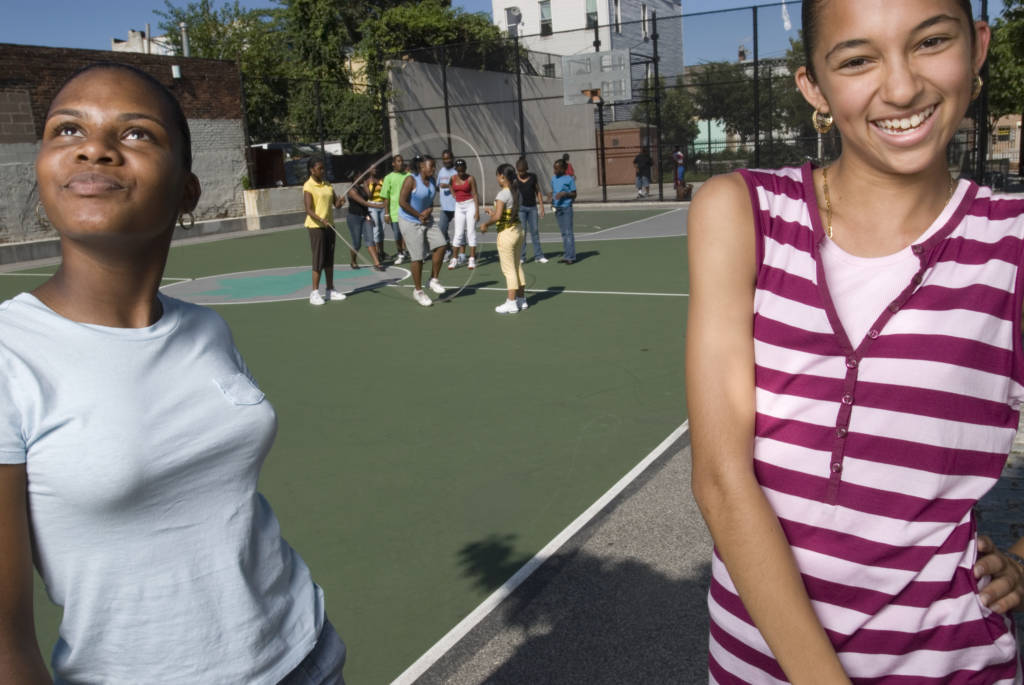 More and more adult women (and men) are getting back into doing what they used to do as kids: double dutch. Now that they are older it's more than just something to pass the time: it's therapy.
More and more adult women (and men) are getting back into doing what they used to do as kids: double dutch. Now that they are older it's more than just something to pass the time: it's therapy.
Antoinette Marshall, a 41-year-old single mother of three who drives a school bus, has taken up Double Dutch again. A couple of nights a week, she meets up with other women from around the city to simply jump rope. They gather each Wednesday evening or host pop-up gatherings in Philly.
At these gatherings, there's no agenda other than to jump rope like a bunch of school girls.
MUST READ: Try The 6-Minute Jump Rope Challenge (You'll Love It!)
The activity and camaraderie of jumping rope with other women has helped Marshall deal with the loss of her brother, her painful break-up recently and even the everyday stress of being a working single mom.
"It's therapy for me because if I didn't have that, I would explode," Marshall explained to DailyNews. "I have a temper and I'm trying to deal with it in the best way I can."
Mental health professional, Dr. Jeremiah Clemency agrees with the health benefits of double dutch. He says jumping rope is beneficial mostly for fluency. Fluency is part of motor praxis (meaning "planning") and is basically the ability to keep a steady pace and rhythm. It can be seen in reading fluency, math fluency, and even fluency in independent working pace. Jumping rope is especially helpful for children with ADD/ADHD.
Fluency is an executive function of the brain, meaning that it is a high-level skill. Jumping rope helps with academic skills, timing, sensory processing and motor coordination.
Take a look at actress and host Tamera Mowry getting back in jumping rope too:
[youtube=https://www.youtube.com/watch?v=7I0c4OfX6JU&w=560&h=315]
All physical exercise is good for the brain. But when you combine both physical and mental demands (like ballroom dancing or jumping double dutch), they have higher impacts on cognitive functioning than exercise tasks alone (like the treadmill or stationary bike). Because you are coordinating your steps with timing and trying to sing on beat, jumping double dutch is one of the very best workouts for brain health. All of it involves coordination, rhythm, and strategy.
Jumping aids in the development of the right and left hemispheres of your brain, that further improves reading skills, enhances memory and makes you more mentally alert. Jumping on the balls of your feet requires your mind and body to make neural muscular adjustments to imbalances created from continuous jumping.
Taking it a step further, think about boxers. Boxers in the ring who jump rope actually are calmer overall than those who don’t. Here's why:
The body resembles a projectile subject to all laws of motion. As you (or someone else is in double dutch) turn the rope, the rope becomes a dynamic flywheel. And it takes the synchronous and harmonious coordination of movements to keep the rope turning without stepping on it. Your ability to jump double dutch and be synchronous with your mind, body and the rope can help you be calmer in challenging situations.
So, to all those moms or older ladies who may be stressed out -- find your old rope or clothesline (like how I used to use back in the day) and start doing a little double dutch. Your heart rate will increase, your blood flow will improve, your breathing and lung capacity will increase and most of all, your mind will be at ease during the jump.
Will you come jump with me? 😉
For more on your favorite exercise, click here.









